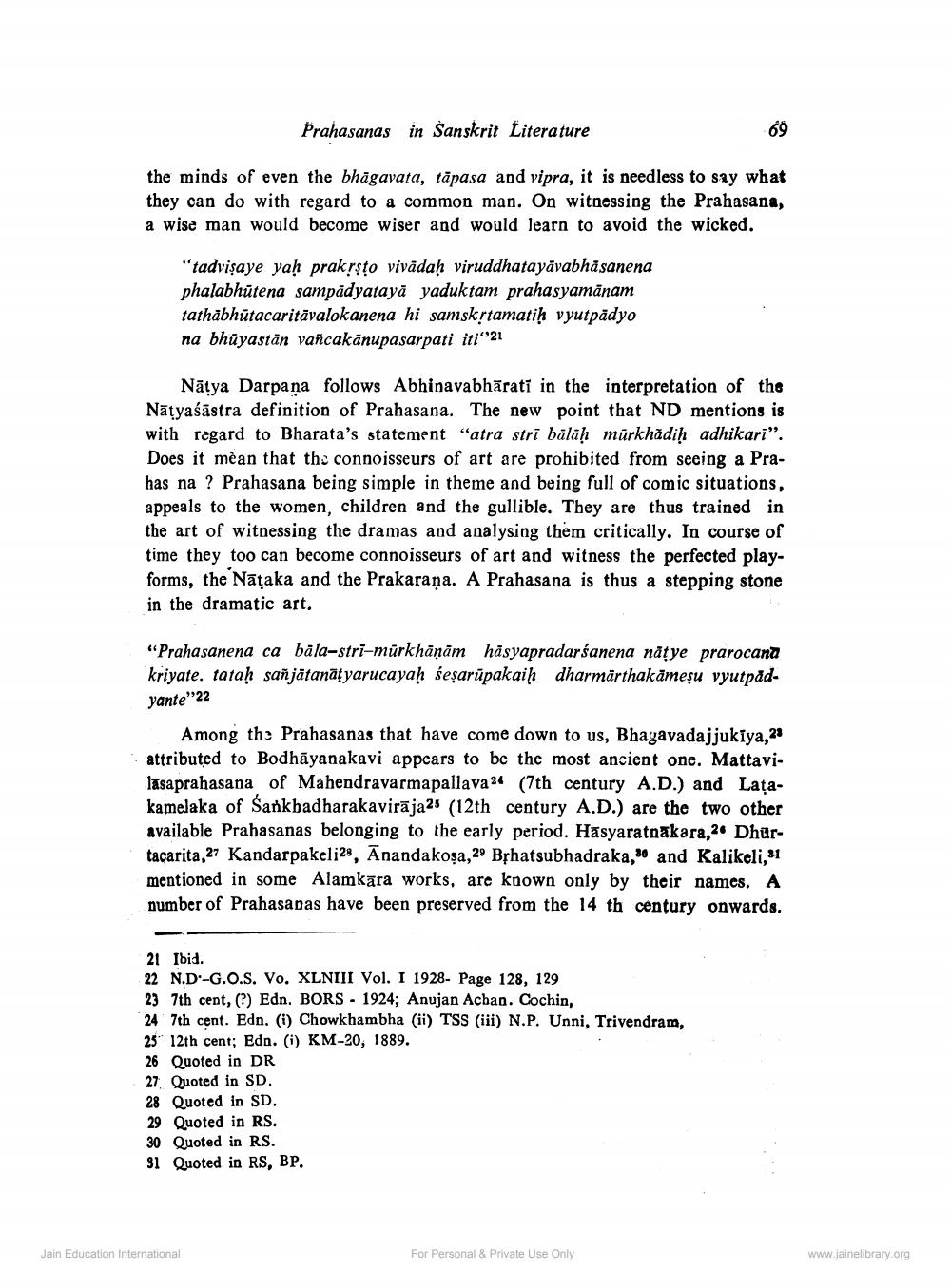________________
Prahasanas in Sanskrit Literature
69
the minds of even the bhāgavata, tāpasa and vipra, it is needless to say what they can do with regard to a common man. On witnessing the Prahasana, a wise man would become wiser and would learn to avoid the wicked.
"tadvişaye yah prakrsto vivādah viruddhatayavabhasanena phalabhūtena sampadyatayā yaduktam prahasyamānam tathābhūtacaritāvalokanena hi samskrtamatih vyutpädyo na bhūyastan vañcakānupasarpati iti''21
Nātya Darpana follows Abhinavabhārati in the interpretation of the Nātyaśāstra definition of Prahasana. The new point that ND mentions is with regard to Bharata's statement "atra stri bālāḥ mürkhădih adhikari". Does it mean that the connoisseurs of art are prohibited from seeing a Prahas na ? Prahasana being simple in theme and being full of comic situations, appeals to the women, children and the gullible. They are thus trained in the art of witnessing the dramas and analysing them critically. In course of time they too can become connoisseurs of art and witness the perfected playforms, the Nāțaka and the Prakaraņa. A Prahasana is thus a stepping stone in the dramatic art.
"Prahasanena ca bāla-stri-mürkhāņām häsyapradarśanena nätye prarocana kriyate. tataḥ sañjātanātyarucayaḥ śeşarūpakaiḥ dharmārthakāmeșu vyutpåd
yante"22
Among the Prahasanas that have come down to us, Bhagavadajjukiya,23 attributed to Bodhāyanakavi appears to be the most ancient one. MattaviIāsaprahasana of Mahendravarmapallava 24 (7th century A.D.) and Latakamelaka of Sankbadharakavirāja25 (12th century A.D.) are the two other available Prahasanas belonging to the early period. Häsyaratnakara,2° Dhurtacarita, 27 Kandarpakelia, Anandakoșa, 29 Bphatsubhadraka, 80 and Kalikeli, 31 mentioned in some Alamkāra works, are known only by their names. A number of Prahasapas have been preserved from the 14 th century onwards.
21 Ibid. 22 N.D.-G.O.S. Vo. XLNIII Vol. I 1928- Page 128, 129 23 7th cent, (?) Edn. BORS - 1924; Anujan Acban. Cochin, 24 7th cent. Edn. (i) Chowkhambha (ii) TSS (iii) N.P. Unni, Trivendram, 25 12th cent; Edo. (i) KM-20, 1889. 26 Quoted in DR 27 Quoted in SD. 28 Quoted in SD. 29 Quoted in RS. 30 Quoted in RS. 31 Quoted in RS, BP.
Jain Education International
For Personal & Private Use Only
www.jainelibrary.org




